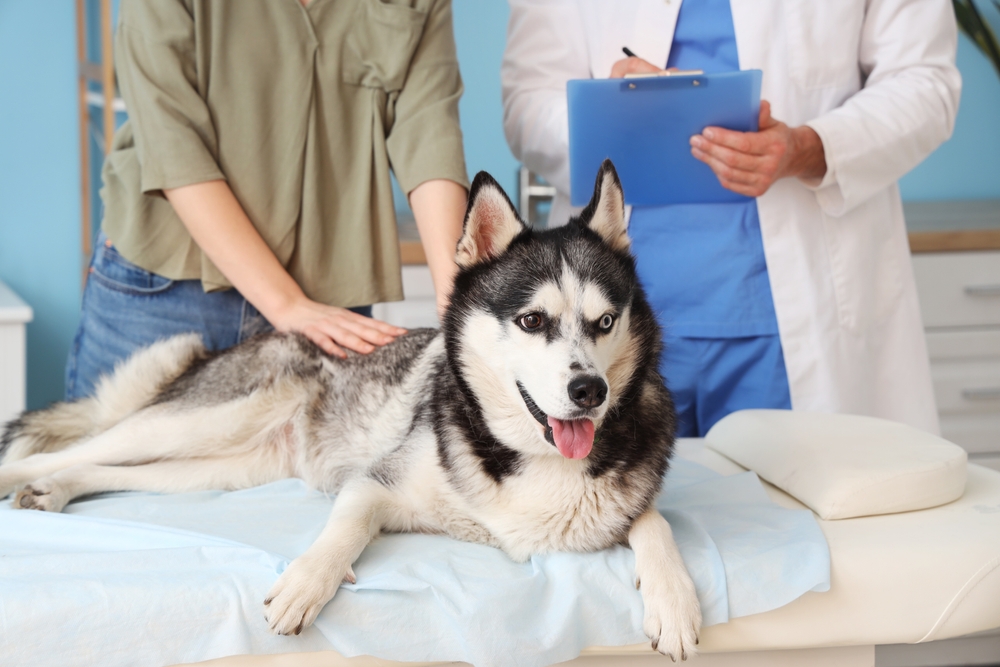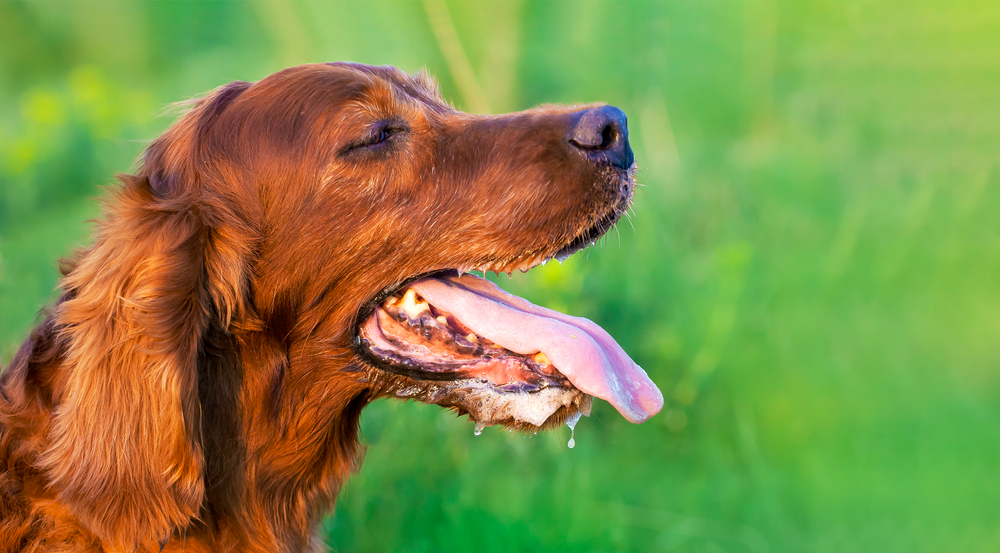While panting is a normal canine behavior, you may notice your pooch panting frequently, leaving you to wonder how much panting is normal. Panting is a typical way for dogs to regulate their body temperature, but excessive panting can sometimes indicate underlying health issues. Our Driftwood Animal Hospital team explains why dogs pant and when to be concerned.
Normal panting behavior in dogs
Dogs pant for myriad reasons as a way to regulate physical and emotional states. Some of the most common reasons dogs pant include:
Panting regulates dogs’ body temperatures
Rather than sweat through their skin like people do, dogs rely on panting to cool down. When a dog pants, they rapidly breathe in air, which helps to evaporate moisture from the tongue, mouth, and upper respiratory tract. The panting process dissipates heat and helps lower a dog’s body temperature.
Physical activity can cause dogs to pant heavily
After exercise or play, dogs normally pant as a way to catch their breath and cool off. This is especially true for breeds with high energy levels or those who enjoy vigorous activities. The panting should gradually decrease as the dog rests and recovers.
Excitement or stress can increase panting in dogs
Dogs may also pant when they are excited, anxious, or stressed. For instance, your dog might pant heavily during a car ride, at the veterinary hospital, or when meeting new people. This panting is usually temporary and subsides once the dog relaxes.
Common causes of excessive panting in dogs
While panting is a normal behavior, excessive panting can sometimes indicate a problem. Here are some common causes of excessive panting in dogs:
Heatstroke in dogs
Heatstroke is a serious condition that occurs when a dog’s body temperature rises to a dangerous level, often caused by prolonged exposure to high temperatures or strenuous exercise without adequate breaks and hydration. Heatstroke signs include heavy panting, drooling, lethargy, disorientation, and potential collapse. Immediate veterinary attention is crucial if heatstroke is suspected.
Obesity in dogs
Overweight dogs tend to pant more because they have to work harder to move and regulate their body temperatures. The extra weight strains their cardiovascular and respiratory systems, leading to increased panting.
Respiratory problems in dogs
Conditions, such as bronchitis, pneumonia, or laryngeal paralysis, can cause breathing difficulties, leading to excessive panting. These issues require a veterinary diagnosis and appropriate treatment to manage the dog’s signs and improve their quality of life.
Heart disease in dogs
Heart conditions, such as congestive heart failure, can reduce the heart’s blood pumping efficiency, leading to fluid buildup in the lungs and difficulty breathing. Dogs with heart disease may pant more frequently, even at rest, cough, and exhibit fatigue and reduced exercise tolerance.
Pain or discomfort in dogs
A dog may pant excessively if they are in pain or discomfort caused by injuries, arthritis, or other health issues. Panting in these cases is often accompanied by other distress signs such as restlessness, whining, or limping.
Endocrine disorders in dogs
Endocrine disorders, such as Cushing’s disease or hypothyroidism, can lead to excessive panting in dogs. Other hormonal imbalance signs include lethargy, weight gain, and a pot-bellied appearance.
Anemia in dogs
Anemia, a condition characterized by a low red blood cell count, reduces the blood’s oxygen-carrying capacity. Dogs with anemia may pant more as their bodies try to compensate for the lack of oxygen. Anemia signs include pale gums, weakness, and lethargy.
Metabolic acidosis in dogs
Metabolic acidosis is an excessive acid buildup in the body, which can be caused by kidney disease, diabetes, or other underlying health issues. Dogs with metabolic acidosis may pant excessively as their bodies attempt to balance the pH levels. Signs can include lethargy, confusion, and a rapid heart rate.
When to be concerned about your dog’s panting

You should always monitor your dog’s panting and be aware of any changes in frequency, intensity, or context. The following signs indicate that excessive panting warrants a veterinary visit:
- Persistent panting — If your dog is panting heavily and continuously, even when resting or in a cool environment, they likely have a health issue.
- Sudden onset — Sudden and intense panting without an obvious cause, such as exercise or excitement, could indicate they have an underlying problem.
- Other illnesses — Excessive panting accompanied by other illness signs, such as coughing, lethargy, vomiting, diarrhea, or difficulty moving, should be addressed promptly.
Panting is a natural behavior for dogs, but excessive panting can sometimes signal underlying health issues. If your dog’s panting behavior is out of the ordinary, call our Driftwood Animal Hospital team or schedule an appointment online.








Leave A Comment